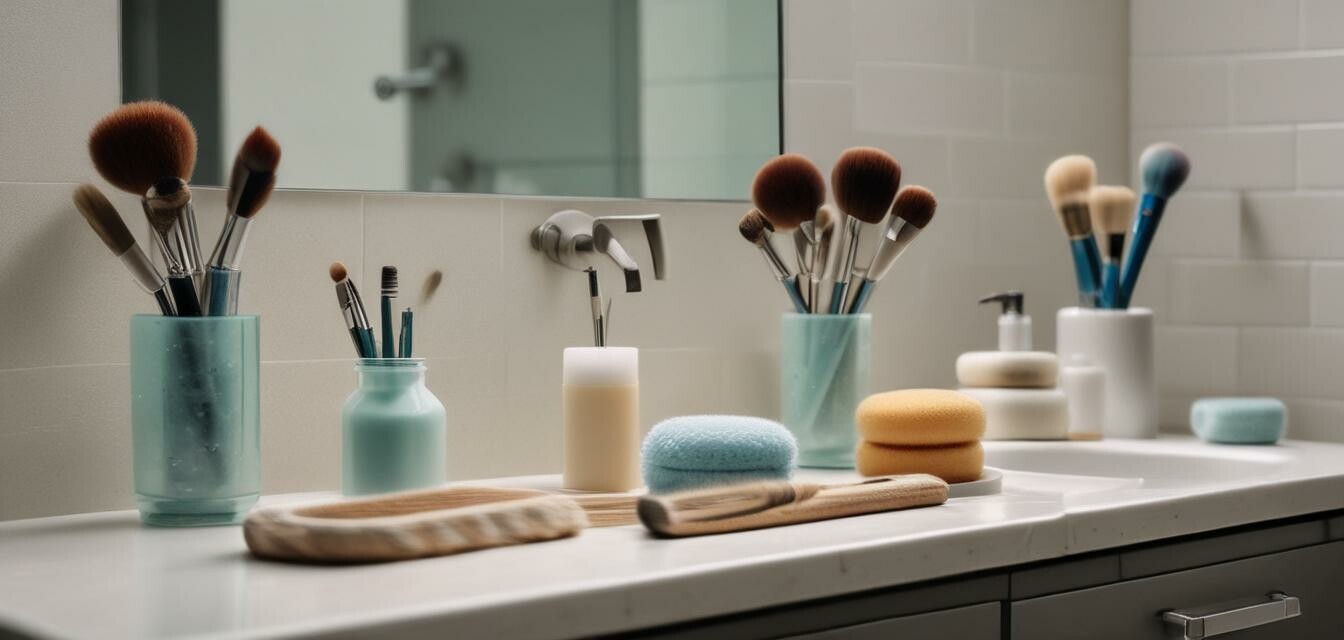
This article was generated using AI and is based on real customer reviews from the Amazon platform. It contains affiliate links, meaning we may earn a commission—at no extra cost to you. As Amazon Associates, we earn from qualifying purchases.
Overcoming Common Mistakes in Beauty Tool Cleaning
Key Takeaways
- Understanding common mistakes helps improve the cleaning process.
- Regular cleaning prevents tool damage and skin issues.
- There are effective methods and products available for proper hygiene.
- Educating yourself on the characteristics of different beauty tools is essential.
- Forming a habitual cleaning routine is key to maintaining tool hygiene.
Cleaning your beauty tools may seem straightforward, but many make common mistakes that compromise hygiene and tool longevity. This article will identify these missteps and provide solutions to enhance your cleaning routine, ensuring your tools remain effective and safe for use.
Why Cleaning Your Beauty Tools is Important
Beauty tools like brushes, sponges, and sterilizers can accumulate dirt, oils, and bacteria over time. Failing to clean them properly can lead to:
- Skin irritations or breakouts
- Reduced effectiveness of beauty products
- Shortened lifespan of beauty tools
Common Mistakes in Cleaning Beauty Tools
1. Not Cleaning Tools Regularly
One of the most common errors is neglecting to clean beauty tools after each use. By allowing makeup and products to dry on brushes and sponges, you make it harder to remove them later.
Solution: Set a schedule for regular cleaning based on usage frequency.
2. Using the Wrong Cleaning Products
Using harsh soaps or alcohol-based cleaners can damage the bristles of brushes or the texture of sponges.
Solution: Use gentle, specially formulated cleaners that are appropriate for your tools. Check our guides on cleaning tips for more information.
3. Forgetting to Sanitize Functionality Tools
While brushes and sponges can be washed, many forget to sanitize tools like tweezers and scissors. This oversight can lead to the transfer of bacteria.
Solution: Regularly sanitize all tools, especially those that come into direct contact with your skin.
4. Using Too Much Water
Excess water can damage tools, especially sponges and brushes. It may not rinse products out effectively and lead to mold growth.
Solution: Use a moderate amount of water and ensure tools are thoroughly dried before storing them.
5. Ignoring Tool-Specific Care Instructions
Different beauty tools require specific care methodologies. Ignoring these instructions can lead to premature damage or depletion of effectiveness.
Solution: Refer to the user manual or product descriptions for each tool's care guidelines. Our guide to tool sanitizers provides detailed cleaning advice.
Effective Cleaning Solutions
Step-by-Step Cleaning Process
Adopt these cleaning practices for efficient hygiene:
- Rinse the tool under lukewarm water.
- Apply a small amount of gentle cleanser.
- Gently rub and lather the tool to lift away dirt and makeup residue.
- Rinse thoroughly until the water runs clear.
- Lay flat to dry on a clean towel.
Table: Cleaning Frequency Recommendations
| Tool Type | Cleaning Frequency |
|---|---|
| Makeup Brushes | Every week |
| Sponges | After every use |
| Facial Devices | After every use |
| Nail Tools | After every use |
Tips for Maintaining Beauty Tool Hygiene
Beginner’s Tips
- Keep a dedicated cleaning space: Set aside a space in your bathroom for cleaning your tools.
- Schedule cleanings: Add cleaning to your weekly beauty routine.
- Use quality products: Invest in good-quality cleaners and sanitizers.
- Educate yourself: Stay informed about the best cleaning practices.
- Store tools properly: Use containers to keep tools organized and clean.
Pros
- Improved skin health and appearance
- Extended life of beauty tools
- Better makeup application and function
Cons
- Time-consuming for some users
- Requires ongoing learning of methods
- Potential for tool damage if done incorrectly
Conclusion
By recognizing and correcting common cleaning mistakes, you can ensure your beauty tools remain in good condition and safe for your skin. Regular maintenance and proper cleaning not only enhance your beauty routine but also promote healthier skin. Be proactive and incorporate these strategies into your beauty practices today.
For more great tips on beauty tool hygiene, check out our buying guides for insights on the best products to keep your beauty tools clean.